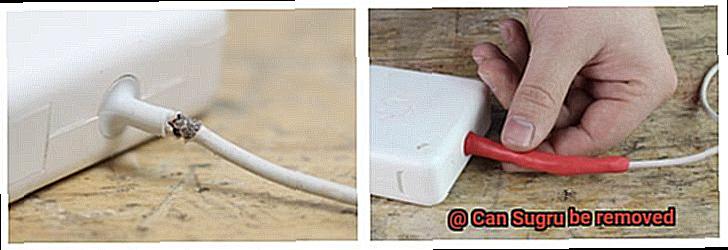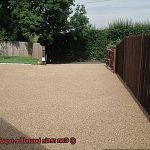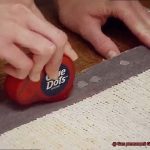Are you a DIY enthusiast or someone who loves fixing things around the house?
Then you’ve probably heard of Sugru, the fantastic moldable glue that can work wonders. But what happens when you need to remove it?
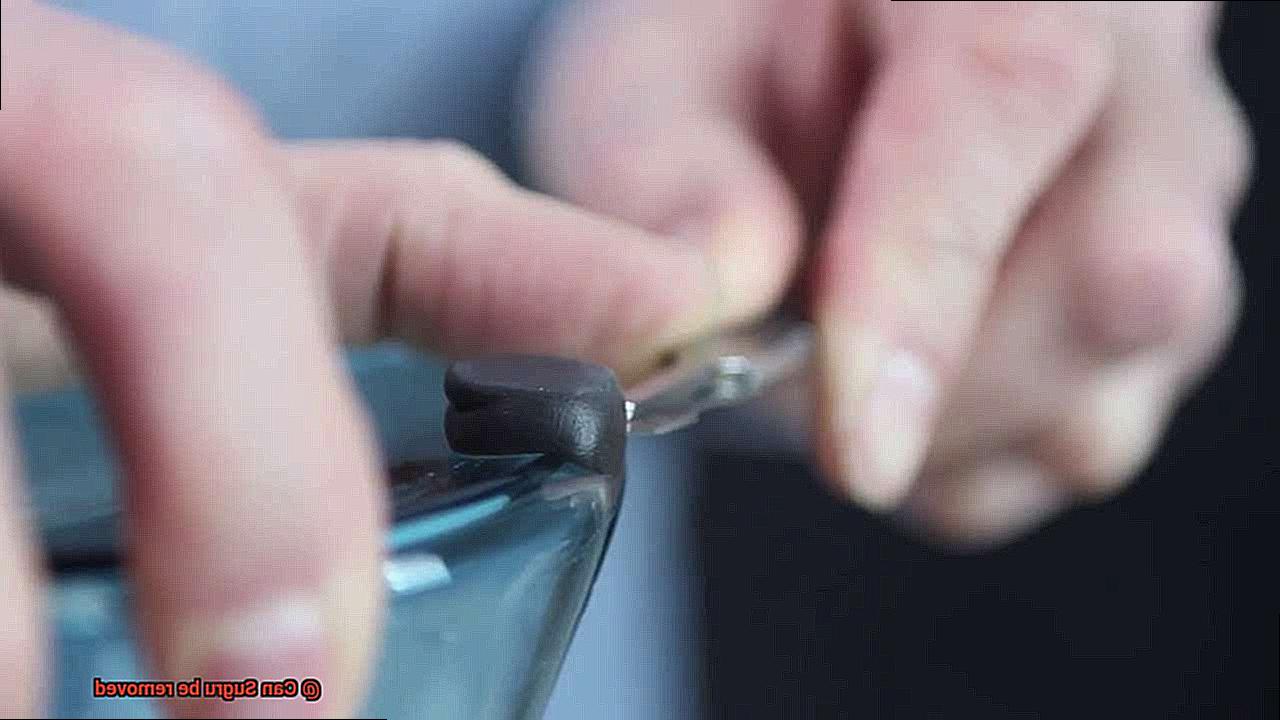
Can Sugru be undone? The answer is a resounding yes.
Whether you’ve made a mistake, want to reposition something, or simply need to restore an item to its original state, removing Sugru is not only possible but also surprisingly easy. In this blog post, we’ll delve into the world of Sugru and uncover the secrets of safely removing it without causing any damage.
So, get ready to reclaim your fix-it freedom as we unravel the mystery of how to undo the magic of Sugru.
What is Sugru and Its Advantages?
Contents
- 1 What is Sugru and Its Advantages?
- 2 Factors Affecting the Ease of Removing Sugru
- 3 Scraping Off Fresh Sugru
- 4 Applying Heat to Remove Sugru
- 5 Using Solvents to Dissolve Sugru
- 6 Mechanical Methods for Removing Stubborn Sugru
- 7 Manufacturer’s Instructions for Removing Sugru
- 8 Safety Considerations When Removing Sugru
- 9 Conclusion
Sugru is a remarkable moldable adhesive that has taken the DIY world by storm. Invented by the ingenious Jane ni Dhulchaointigh, this versatile material has been transforming repair and creative projects.
With its patented formulation combining silicone rubber and other ingredients, Sugru offers a multitude of advantages that make it a must-have for every handyman and artist.
Unlimited Adhesion:
Sugru’s greatest advantage lies in its ability to adhere to almost any material under the sun. From ceramics and glass to metal, wood, and most plastics, Sugru can seamlessly bond with them all. Whether you’re fixing a shattered mug handle, reinforcing a fraying cable, or creating custom grips for your tools, Sugru can be molded and shaped to suit your needs.
Enduring Durability:
Once cured, Sugru remains strong and resilient even in the face of extreme temperatures. It can withstand freezing cold or scorching heat without losing its structural integrity. This means you can confidently use Sugru for both indoor and outdoor applications, knowing that it will stand the test of time.
Waterproof Wonder:
Say goodbye to worries about water damage. Sugru is not only resistant to water but also impervious to UV radiation. It won’t lose its adhesive properties or deteriorate over time when exposed to moisture. This makes it perfect for repairs in wet environments like bathrooms or kitchens.
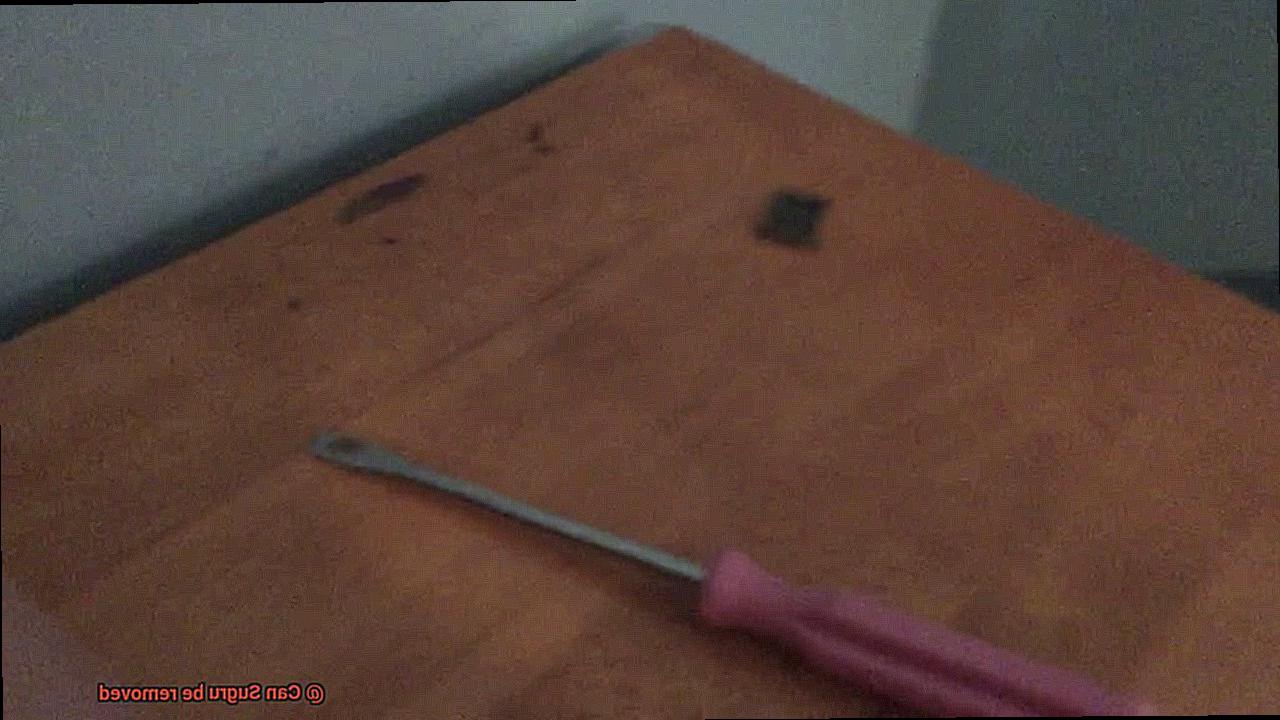
Electrically Insulating:
Electronics enthusiasts rejoice. Sugru possesses excellent electrical insulation properties, making it ideal for protecting and repairing electronic devices. It can create a protective barrier around exposed wires or craft custom fittings for connectors, ensuring safety and functionality.
Effortless Application:
Using Sugru is a breeze. Each pack comes in a convenient size that’s easy to open and use. With its soft, putty-like consistency, Sugru can be effortlessly manipulated and shaped by hand. Once applied to the desired surface, it cures at room temperature within 24 hours, forming a robust bond that’s ready for action.
A Rainbow of Possibilities:
Sugru offers a delightful spectrum of colors to suit your creative needs. Mix them together to create custom shades, or match them perfectly with the object you’re repairing. With Sugru, not only can you fix and improve, but you can also express your artistic side with endless possibilities.
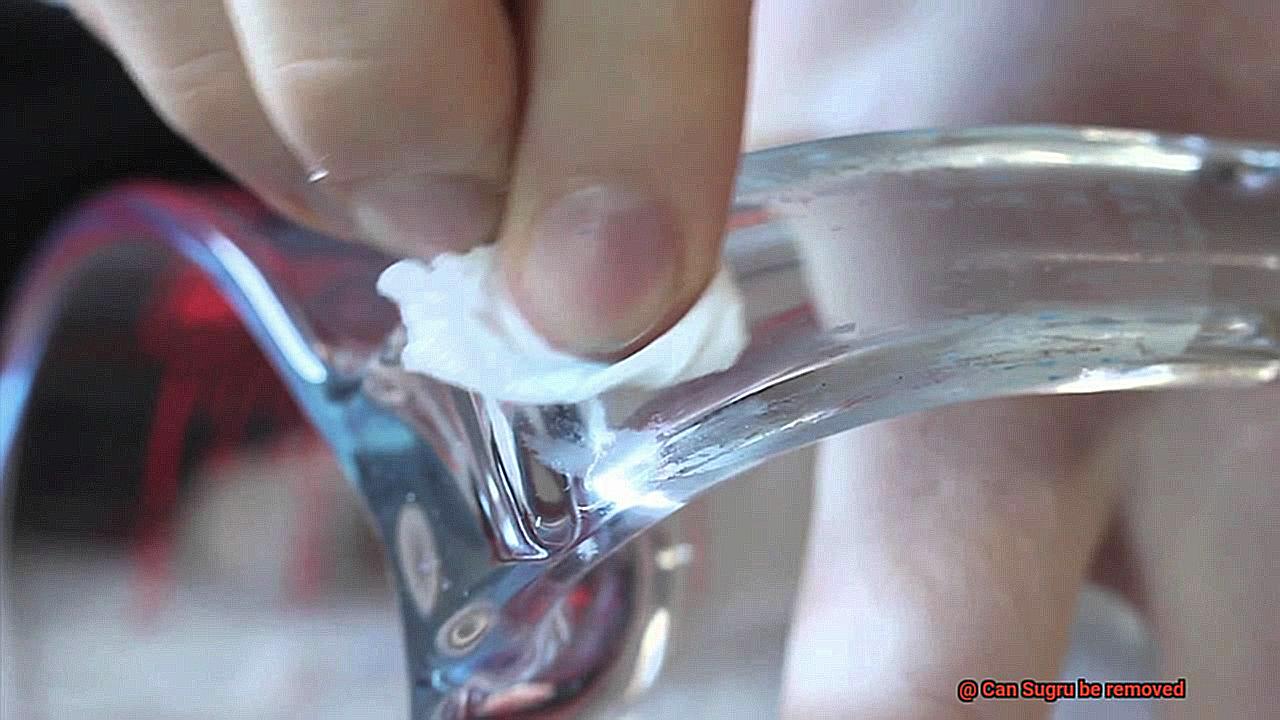
Factors Affecting the Ease of Removing Sugru
Sugru, the magical moldable glue that seems to stick to anything and everything, is a versatile and handy product. However, there may come a time when you need to remove it. The ease of removing Sugru depends on several factors that we’re about to explore.
Firstly, the curing time of Sugru plays a significant role in its removal. If you attempt to remove it before it has fully hardened, you’ll have an easier time breaking the bond. So, patience is key here. Allow Sugru enough time to cure and form a strong bond before attempting to remove it.
Next, let’s consider temperature. Sugru behaves differently depending on whether it’s hot or cold. At higher temperatures, Sugru becomes softer and more pliable, making it easier to remove. On the other hand, at lower temperatures, Sugru hardens and becomes more resistant to removal. If you’re in a hurry to remove Sugru, try heating it up a bit.
The type of surface you’ve applied Sugru to also affects its removal. Smooth and non-porous surfaces, like glass or metal, provide less adhesion for Sugru, making it easier to remove. However, if you’ve applied Sugru to a rough or porous surface, like wood or fabric, be prepared for a little more effort in removing it.
The thickness of the layer of Sugru can also affect its ease of removal. Thicker layers have more surface area in contact with the substrate, resulting in stronger adhesion. So if you’re planning on removing Sugru, try applying thinner layers.
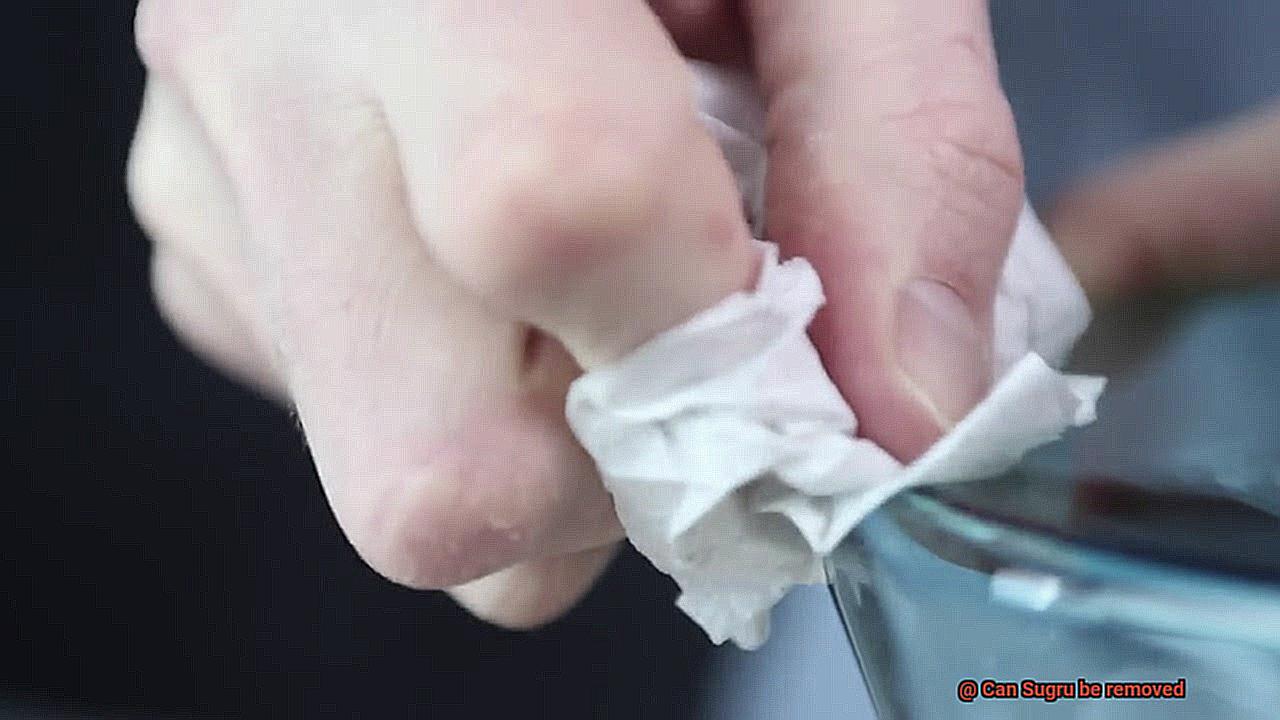
Age is another factor to consider. Just like fine wine (or cheese), Sugru gets stronger with age. As it continues to cure and harden over time, its bond with the substrate strengthens. So if you’ve left your Sugru on for a while, be prepared for a bit of a challenge in removing it.
Finally, the method you choose to remove Sugru can make a difference. You can try scraping off the cured Sugru with a sharp tool, applying heat to soften it, or using solvents to dissolve the adhesive properties. Just be sure to choose the right method for your surface type and desired outcome.
Scraping Off Fresh Sugru
Don’t fret. In this comprehensive guide, we’ll walk you through the process of scraping off fresh Sugru, ensuring that you don’t damage your precious items or lose your sanity in the process.
Step 1: Exercise Patience and Let it Cure:
Before diving in with your trusty scraper, exercise a little patience and let the Sugru cure for at least 24 hours. This waiting game is crucial to ensure that the glue has hardened enough to be scraped off without creating a messy situation.
Step 2: Choose Your Weapon:
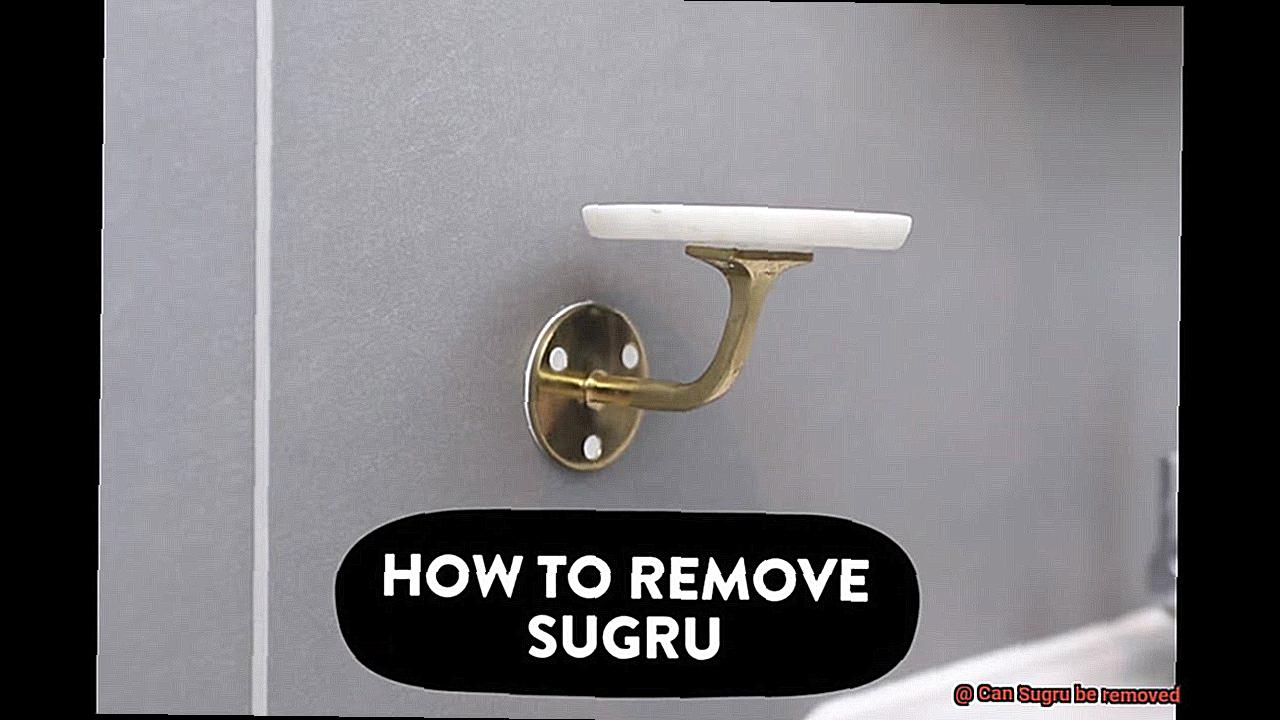
Now it’s time to arm yourself with the right tools. Grab a plastic or metal scraper – think putty knives or even a trusty credit card. Ensure that it has a smooth edge to avoid any unsightly scratches on the surface beneath. Having some rubbing alcohol or soapy water and a cloth nearby will also come in handy for cleaning up any residue.
Step 3: Gentle Motions, Big Results:
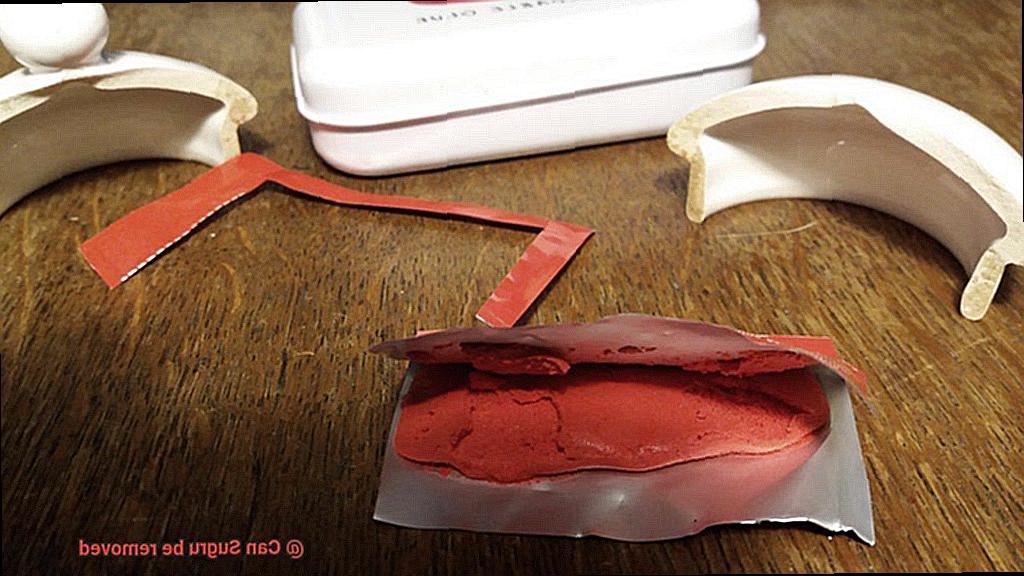
With your scraper in hand, delicately insert the edge under the excess Sugru, and start lifting it off the surface. Remember, gentle and controlled motions are key here. Applying too much force can lead to unintended consequences like damaging or tearing the material.
Step 4: Stubborn Sugru? Meet Rubbing Alcohol or Soapy Water:
If your Sugru is putting up a fight, fear not. Soften its resolve by employing some rubbing alcohol or soapy water. Dampen a cloth with either substance and gently rub it onto the area where the Sugru is adhered. This magical elixir will help loosen the material and make scraping it off a breeze.
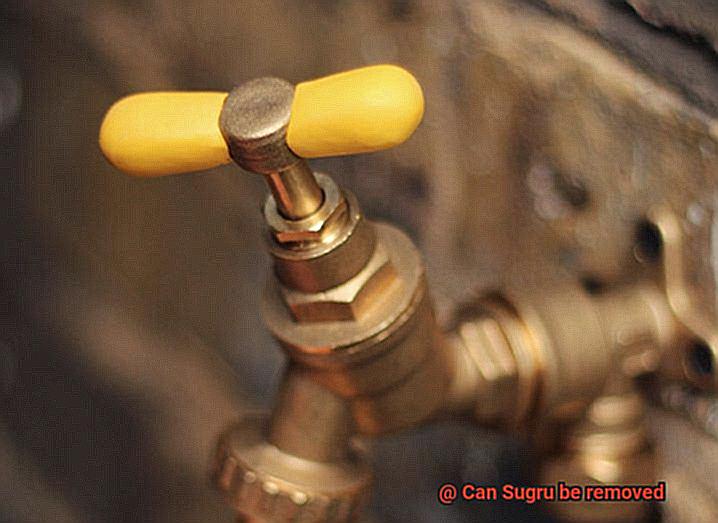
Step 5: Residue Removal:
After successfully removing most of the excess Sugru, you may still find some stubborn residue lingering around. But fret not. Continue using the scraper to lift and scrape off any remaining traces. If needed, repeat the process of applying rubbing alcohol or soapy water to help loosen the residue, until your surface is pristine again.
Step 6: Clean Up the Surface:
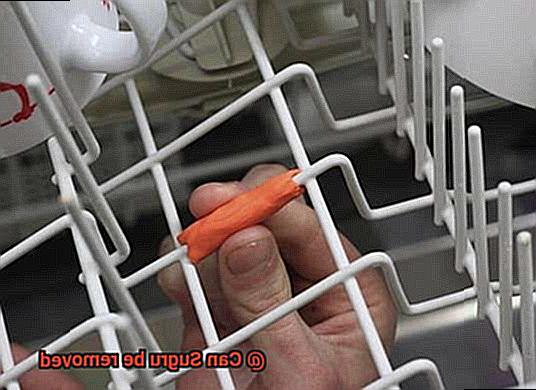
Once you’ve triumphantly scraped off all the Sugru, it’s time to give your surface some love. Grab a clean cloth and wipe it down with some rubbing alcohol or soapy water to bid farewell to any lingering residue. This final step ensures that your surface is clean and ready for its next adventure.
Applying Heat to Remove Sugru
If you’ve found yourself in a sticky situation with this versatile adhesive, fear not. Applying heat is the key to removing Sugru from various surfaces. Get ready to banish that unwanted stickiness once and for all.
First, gather your tools. You’ll need a hairdryer or heat gun, and if you’re feeling adventurous, an oven or microwave. Let’s dive into the process and get started.
Hairdryer or Heat Gun Method:
- Set your hairdryer or heat gun to a low heat setting.
- Direct the hot air onto the Sugru, moving the tool back and forth.
- As the Sugru warms up, it becomes more pliable and easier to remove.
- Gently peel away the softened Sugru, taking care not to damage the surface underneath.
Oven or Microwave Method:
- Preheat your oven to a low temperature (around 150°F or 65°C).
- Place the Sugru-covered object on a baking sheet inside the oven.
- Let the heat work its magic for several minutes, softening the Sugru.
- Once it’s pliable enough, carefully peel off the Sugru.
If using a microwave:
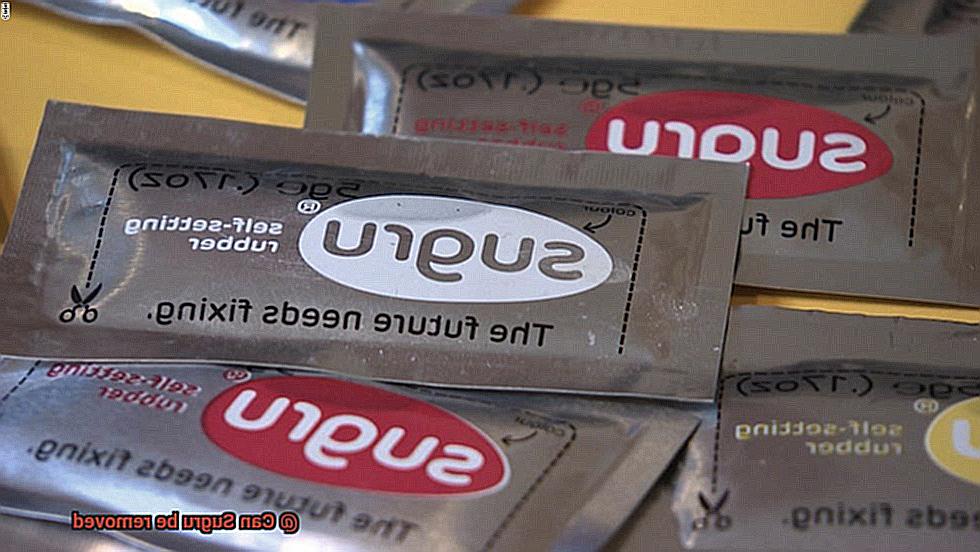
- Put the object with Sugru in a microwave-safe container, ensuring it doesn’t touch the sides.
- Use short bursts of heat (about 10 seconds at a time) until the Sugru becomes pliable.
- Gently peel off the softened Sugru.
Remember, safety first. Allow the heated Sugru to cool down slightly before attempting removal to avoid burns.
If there’s any residue left after removing the softened Sugru, don’t worry. Grab some rubbing alcohol or a mild solvent suitable for the surface and clean it up like a pro.
Keep in mind that applying heat may not work equally well on all surfaces or in all situations. To be on the safe side, test a small and inconspicuous area before proceeding with the complete removal process.
With a little heat and patience, you can bid farewell to Sugru and restore your beloved items to their former glory. Happy removing.
Using Solvents to Dissolve Sugru
There is a solution that comes in the form of solvents. These magical liquids, such as isopropyl alcohol and acetone, can dissolve Sugru and banish it from your life without a trace.
Let’s start with isopropyl alcohol, also known as rubbing alcohol. This versatile solvent can be found at your local pharmacy or drugstore. To unleash its power, generously apply it onto a cloth or sponge and gently rub it onto the Sugru.
Watch as it works its magic, penetrating the material and loosening its grip. After a few minutes, arm yourself with a plastic scraper or even your trusty fingernail, and start scraping off the dissolved Sugru. Just be careful not to damage the surface underneath. If needed, repeat this process until every last bit of Sugru is vanquished.
But what if you’re facing a tougher opponent? Enter acetone, the stronger sibling of solvents. However, be cautious, for acetone can be a bit aggressive and potentially harm certain surfaces like plastics or painted ones. Before diving in headfirst, perform a small test on an inconspicuous area to ensure no harm will come. Once you’ve given the green light, apply a small amount of acetone onto a cloth or cotton ball and gently massage it onto the Sugru. Let it sit for a few minutes while it dissolves the material. Then, armed with your trusty plastic scraper or fingernail, scrape away the dissolved Sugru.
Now, here’s the thing: solvents may not completely eradicate all traces of Sugru. Some residue may cling on for dear life, making removal a bit more challenging. But fear not. The power of solvents can significantly aid in the removal process.
Before embarking on this adventure, remember to work in a well-ventilated area and heed any safety precautions mentioned on the solvent’s packaging. And don’t forget to protect your skin with gloves against the prolonged exposure to these solvents.
If you’re unsure about using solvents or dealing with a surface that requires special handling, consult the manufacturer’s guidelines or reach out to Sugru directly for expert recommendations on removing their product.
Mechanical Methods for Removing Stubborn Sugru
Mechanical Methods for Removing Stubborn Sugru
If you find yourself in a sticky situation with stubborn Sugru clinging to surfaces like a determined octopus, fear not. We’ve got some mechanical methods up our sleeves that will help you banish that clingy mess. Get ready to flex those muscles and put some physical force into removing that Sugru.
- Scrape it off: The trusty old method of scraping comes to the rescue once again. Grab a putty knife or a plastic scraper and gently, yet firmly, scrape away the hardened Sugru. Take it slow and steady to avoid damaging the underlying surface. Remember, perseverance pays off.
- Sand it away: For those larger areas or thicker layers of Sugru, sandpaper or an abrasive sponge will be your best buddies. Start with a coarse grit sandpaper to break through the tough Sugru, gradually working your way up to a finer grit for that smooth finish you desire. It’s like sculpting a masterpiece.
- Heat it up: Sometimes, a little heat is all you need to soften that stubborn Sugru. Grab your trusty hairdryer or heat gun and apply heat to the dried Sugru. Be careful not to overheat or damage the surface though, as a little heat goes a long way in loosening its grip.
- Scrub it off: If you’re dealing with smaller areas or delicate surfaces, it’s time to bring out the toothbrush or brush with stiff bristles. Gently scrub the dried Sugru using circular motions, breaking down its adhesive properties and loosening it up. It’s like coaxing a stubborn stain out of fabric.
- Lubricate and loosen: Sometimes, all you need is a bit of lubrication to make that Sugru let go. WD-40 or rubbing alcohol can be your secret weapons here. Apply either of these lubricants to the dried Sugru, let it sit for a few minutes, and then attempt removal. It’s like a magical spell that unravels the Sugru’s hold.
Remember, while mechanical methods can be effective in removing stubborn Sugru, they may leave behind residue or potentially damage the surface. Test any method on a small inconspicuous area first before going full force.
Manufacturer’s Instructions for Removing Sugru
Sugru, the remarkable moldable glue that transforms into durable silicone rubber, is known for its strong adhesive properties. However, there may come a time when you need to remove it. Fear not, for the manufacturer has provided comprehensive instructions on how to effectively and safely banish Sugru from your surfaces.
Before embarking on your removal journey, it is crucial to understand that the process may vary depending on the surface to which Sugru has been applied. Different materials require different techniques and products for successful removal. So, let’s delve into the step-by-step instructions that will help you conquer Sugru like a pro.
- Assess the battlefield: Take a moment to evaluate the surface. Different surfaces may demand different removal methods, so keep this in mind throughout the process.
- The first strike: Armed with a plastic scraper or the edge of a credit card, gently scrape away as much excess Sugru as possible. This initial step minimizes the amount of material that needs softening or dissolving.
- Softening the residue: Prepare your weapon of choice – cooking oil or baby oil. Apply a small amount to the affected area and let it seep in for a few minutes. This allows the oil to break down the Sugru, making it easier to remove.
- Gentle circular motions: Equip yourself with a soft cloth or sponge and start gently rubbing the area in circular motions. This action further breaks down the Sugru and helps lift it from the surface. Be cautious not to scrub vigorously, as delicate materials may suffer damage.
- Reinforcements arrive: If the oil alone fails to eliminate all traces of Sugru, call in mild household detergent or soap for backup. Mix a small amount with warm water and apply it to the affected area. Let it sit for a few minutes before employing your cloth or sponge once again.
- Unyielding spots: For those stubborn or older Sugru remnants, it’s time to bring out the big guns – Isopropyl alcohol, also known as rubbing alcohol. Apply a small amount to a cloth or cotton ball and gently rub until the Sugru starts dissolving. However, remember to work in a well-ventilated area and steer clear of open flames or sparks – safety first.
- Victory is near: With Sugru banished from existence (well, almost), give your surface a thorough cleaning with water and mild detergent. This ensures the removal of any residual oil or alcohol. Allow it to dry completely before embarking on your next adhesive adventure.
Remember, prevention is key. By adhering to the manufacturer’s instructions for application, you can save yourself the headache of removal. But in case you find yourself in a sticky situation, armed with these instructions, you now possess the knowledge to conquer Sugru like a seasoned glue warrior.
Safety Considerations When Removing Sugru
Removing Sugru can be a sticky situation, but with the right safety precautions, you can tackle the task with ease. Here are some important safety considerations to keep in mind for a successful and safe Sugru removal mission:
- Protect your hands: Sugru is known for its stickiness, so it’s crucial to wear protective gloves when removing it. This will shield your skin from potential irritation or allergic reactions that may occur.
- Ventilate the area: When using solvents or chemical-based products for Sugru removal, ensure proper ventilation. Open up windows or use a fan to circulate fresh air and prevent inhaling any fumes or vapors that may be released during the process. Keep those lungs happy and healthy.
- Handle tools with care: Be cautious when using tools for removing Sugru. Sharp objects like knives or blades should be handled carefully to avoid accidental injuries. Opt for plastic or non-abrasive tools specifically designed for removing adhesives. Remember, safety first.
- Know your surfaces: Different surfaces require different approaches when removing Sugru. Delicate surfaces like painted walls or furniture may need gentler methods compared to more robust materials like metal or glass. Take the time to research the best techniques for your specific surface before diving in.
- Patience is key: Removing Sugru can be a time-consuming task, especially if it has been on for a while or applied in thick layers. Rushing the process may result in damage or incomplete removal. So take your time, be persistent, and don’t give up.
LAO882DEp6I” >
Conclusion
Sugru, the versatile adhesive and moldable glue, is known for its strong bond and durability. But what if you need to remove it? Can Sugru be easily taken off?
The answer is yes. While Sugru forms a strong bond when cured, it can still be removed with a little effort. One method is to use a sharp knife or razor blade to carefully cut away the excess Sugru. Take your time and work slowly to avoid damaging the surface underneath.
If you’re dealing with a larger amount of Sugru or a more stubborn bond, there are other techniques you can try. Applying heat can soften the material, making it easier to peel away. You can use a hairdryer or heat gun on low settings to gently warm the Sugru before attempting removal.
Another option is to use an adhesive remover or solvent. There are commercially available products specifically designed for removing adhesives like Sugru. Follow the instructions carefully and test on a small, inconspicuous area first to ensure compatibility with your surface.
It’s important to note that while these methods can help remove Sugru, they may also leave behind some residue or discoloration. In some cases, sanding or buffing the area may be necessary to restore the surface’s original appearance.
In conclusion, while Sugru offers a strong and durable bond, it is still possible to remove it when needed.

